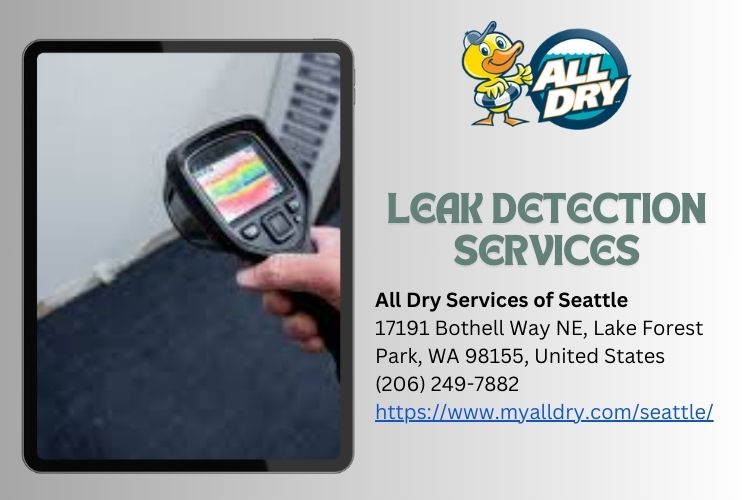Introduction
Mold can be a hidden enemy within your home, especially after water damage occurs. Whether it's from a leaky roof, flooding, or even a burst pipe, the aftermath of water damage can lead to serious mold growth if not addressed swiftly and effectively. In Lake Forest Park, where moisture levels can fluctuate significantly due to weather conditions, understanding how to manage water damage restoration and mold remediation is crucial for maintaining the integrity and safety of your home.
In this comprehensive guide, "Mold Remediation 101: Protecting Your Home After Water Damage in Lake Forest Park," we'll delve into the essentials of mold remediation. We’ll cover various aspects including identifying mold growth, the importance of timely water damage restoration, and practical steps you can take to protect your home. By the end of this article, you'll have a solid understanding of how to combat mold and safeguard your living space.
What is Water Damage Restoration?
Understanding Water Damage Restoration
Water https://www.myalldry.com/seattle/ All Dry Services of Seattle damage restoration is a systematic process involving the removal of water from affected areas in your home and restoring it back to its pre-damaged state. This often includes cleaning, drying, and repairing structures and belongings that have been compromised by excess moisture.
The Process of Water Damage Restoration
Inspection: Professionals assess the extent of water damage. Extraction: Using specialized equipment, they remove standing water. Drying: Areas are dried using dehumidifiers and fans. Cleaning: Surfaces are cleaned and disinfected to prevent mold growth. Restoration: Repairing or replacing damaged materials like drywall or flooring.Why is Timely Intervention Crucial?
Delaying water damage restoration can lead to extensive structural damage, create unsafe living conditions, and facilitate mold development. Mold can start growing within 24-48 hours after exposure to moisture; hence immediate action is vital.
The Link Between Water Damage and Mold Growth
How Does Mold Develop After Water Damage?
When water seeps into materials such as wood, drywall, or carpet, it creates an ideal breeding ground for mold spores which thrive in damp environments. These spores multiply rapidly under favorable conditions—warmth and humidity.
Identifying Common Signs of Mold Growth
- Musty odors Visible mold spots on surfaces Discoloration on walls or ceilings Increased allergy symptoms among inhabitants
Mold Remediation Explained
What is Mold Remediation?
Mold remediation refers to the process of eliminating mold from indoor spaces effectively while preventing future growth. It involves identifying sources of moisture that contribute to mold proliferation.
Importance of Professional Mold Remediation Services
While DIY methods may work for minor infestations, professional services are essential for larger outbreaks due to:
- Specialized equipment and techniques Knowledgeable technicians trained in safety protocols Comprehensive assessment and long-term prevention strategies
Steps Involved in Mold Remediation
Initial Assessment and Inspection
A thorough inspection helps identify affected areas and determine the extent of contamination.
Containment Measures
Professionals will seal off contaminated areas with plastic sheeting to prevent spores from spreading during the cleanup process.
Air Filtration Techniques
Using sophisticated air scrubbers ensures that airborne spores are filtered out during remediation efforts.
Removing Contaminated Materials
Porous materials such as carpets or ceiling tiles may need to be discarded if they harbor significant mold growth.
Safety Precautions During Mold Remediation
Protective Gear Essentials
Technicians should wear:
- N95 respirators Protective gloves Goggles
These items help reduce exposure to harmful spores during remediation efforts.

Ventilation Practices
Proper ventilation helps minimize inhalation risks while allowing harmful particles to dissipate quickly.
Preventative Measures for Future Incidents
Addressing Moisture Issues Promptly
Homeowners should regularly check for leaks in plumbing systems or roofs which could invite future water damage.
Humidity Control Solutions
Investing in dehumidifiers can significantly reduce humidity levels indoors—keeping unwanted moisture at bay!
Regular Maintenance Checks
Routine inspections can help catch potential problems before they escalate into costly repairs or health hazards.
DIY vs Professional Help: What’s Best?
When Should You DIY?
If you discover a small patch (less than 10 square feet) of mold on non-porous surfaces such as tile or glass, you might tackle it yourself using household cleaners like vinegar or bleach solutions.
When Should You Call Professionals?
For larger infestations beyond simple cleaning tasks—especially those involving structural components—professional intervention becomes necessary for effective remediation without risking health complications!
Common Myths About Mold Remediation Debunked
Myth: Bleach kills all types of mold.- Fact: While bleach may kill surface molds temporarily, it doesn’t penetrate porous surfaces where roots reside.
- Fact: Not all molds pose health risks; however, some allergens can trigger respiratory issues in sensitive individuals.
- Fact: Painting over existing mold only conceals it but does nothing to eradicate its presence!
FAQs About Mold Remediation
What causes mold growth after water damage?
Excess moisture provides an ideal environment for mold spores which thrive under warm humid conditions.
How long does the mold remediation process take?
The duration varies based on severity; small areas may take a few days while larger infestations could span weeks.
Can I stay home during remediation?
Generally speaking—it’s advisable to vacate during intense clean-up operations due to potential exposure risks associated with airborne spores!
Is all black mold dangerous?
While not all varieties are hazardous; Stachybotrys chartarum (toxic black mold) requires immediate attention due its association with severe health complications!
How much does professional mold remediation cost?
Costs depend on various factors including size/extent of infestation but typically range from $500-$6,000+ depending on complexity involved!
li27/ol5/header1header1/main1section1section1/main1/##